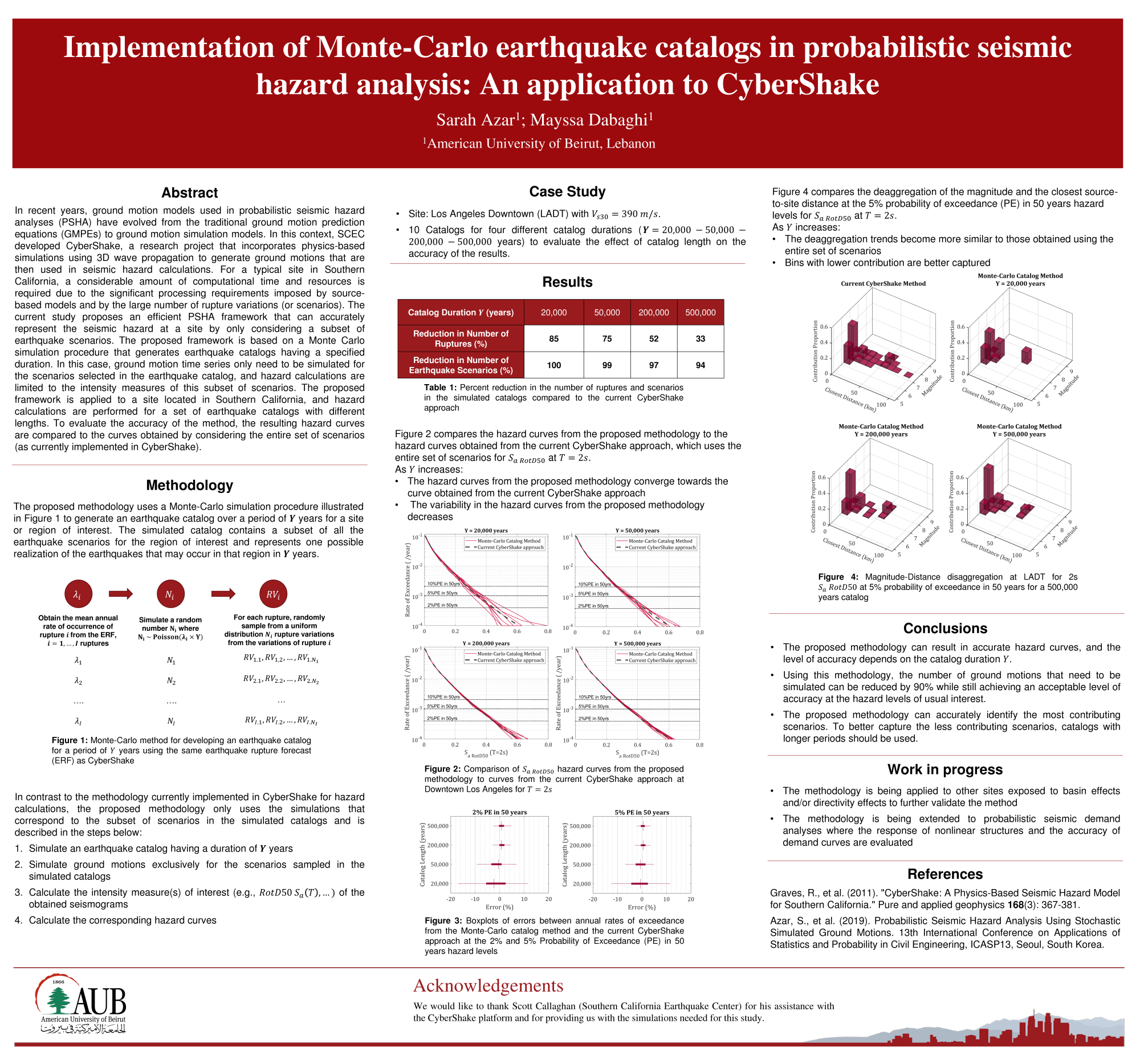Poster #231, Earthquake Engineering Implementation Interface (EEII)
Implementation of Monte-Carlo earthquake catalogs in probabilistic seismic hazard analysis: An application to CyberShake
Poster Image:

Poster Presentation
2020 SCEC Annual Meeting, Poster #231, SCEC Contribution #10454 VIEW PDF
other hand. The current paper proposes an efficient PSHA framework that can accurately represent the seismic hazard at a site by only considering a subset of earthquake scenarios. The proposed framework is based on a Monte Carlo simulation procedure that generates earthquake catalogs having a specified duration. In this case, ground motion time series are exclusively simulated for the scenarios selected in the earthquake catalog, and hazard calculations are limited to the intensity measures of this subset of scenarios. To evaluate the accuracy of the method, the proposed framework is applied to sites located in Southern California, and hazard calculations are performed for a set of earthquake catalogs with different lengths. The resulting hazard curves are then compared to the curves computed by CyberShake at the same sites. The results show that implementing Monte Carlo earthquake catalogs in simulation-based PSHA can reduce the computational time of the approach currently applied in CyberShake, while still maintaining acceptable levels of accuracy in the hazard curves.
SHOW MORE
SHOW MORE






